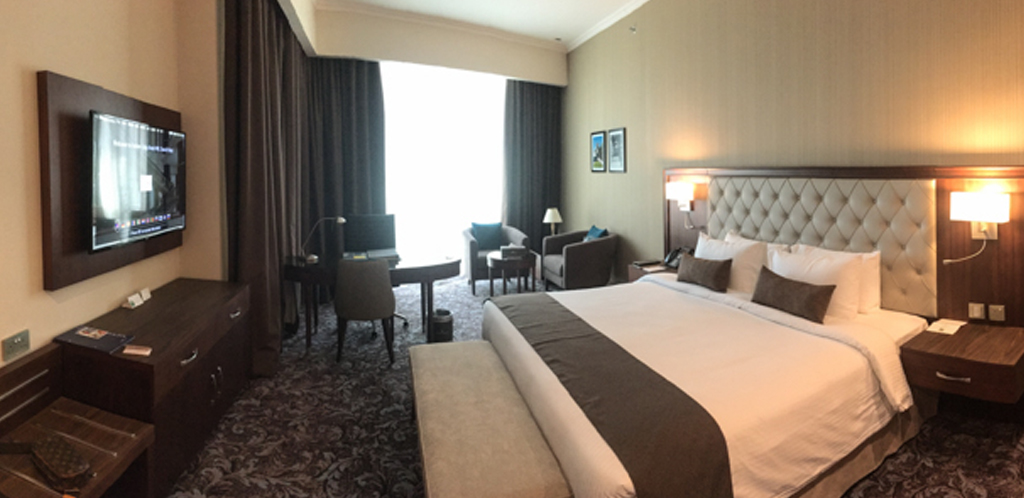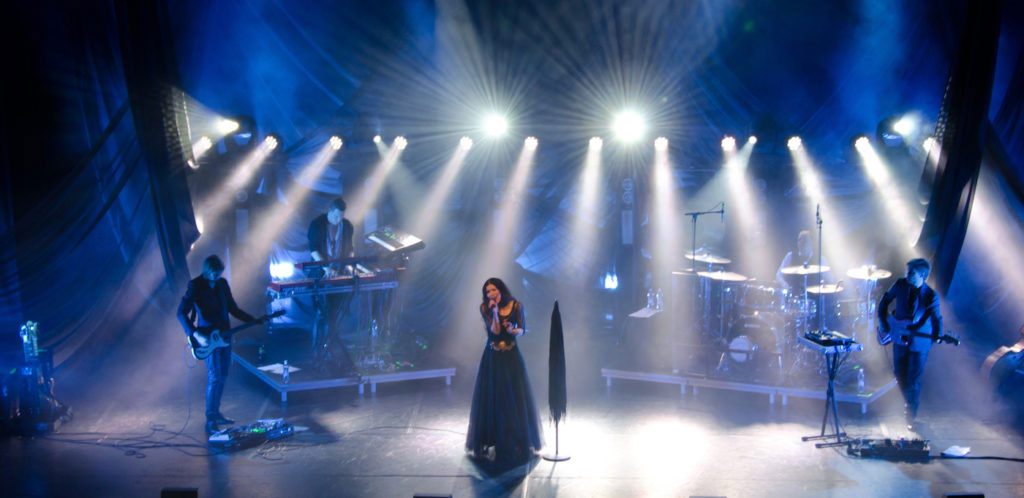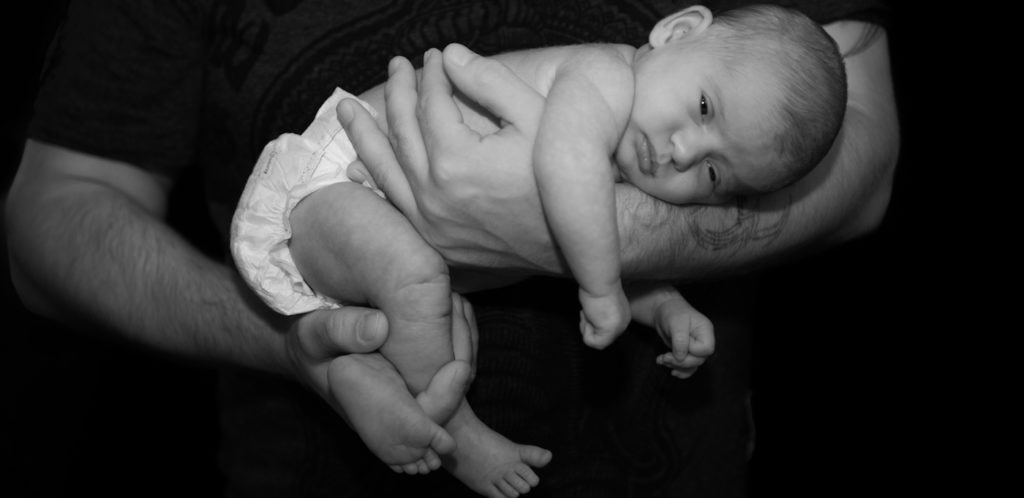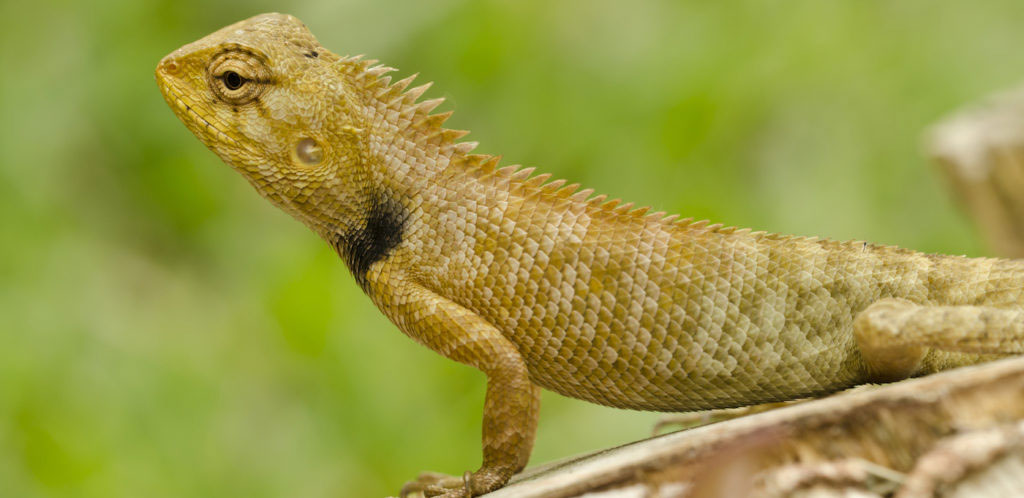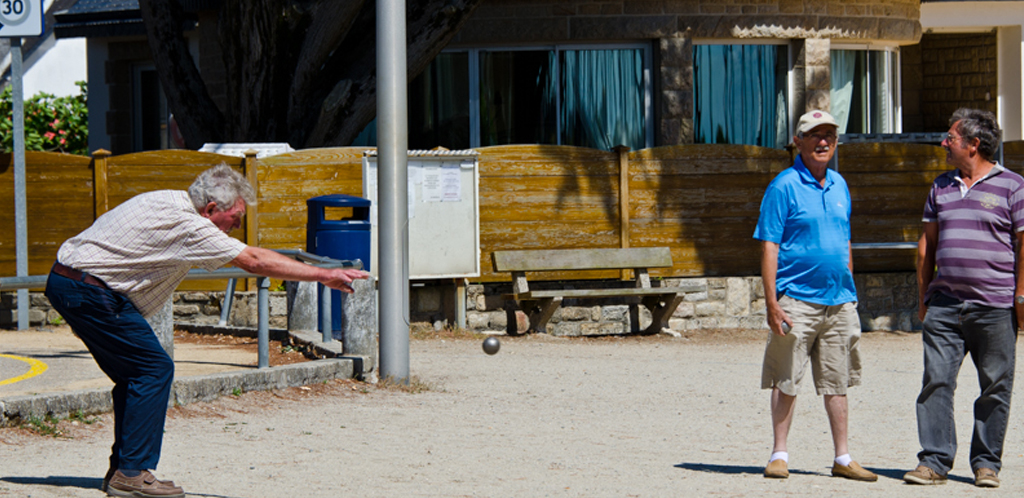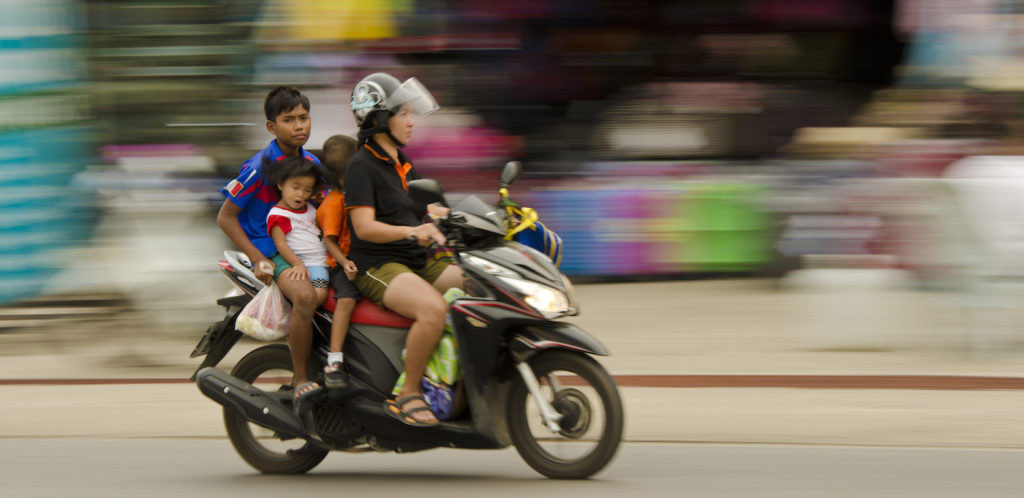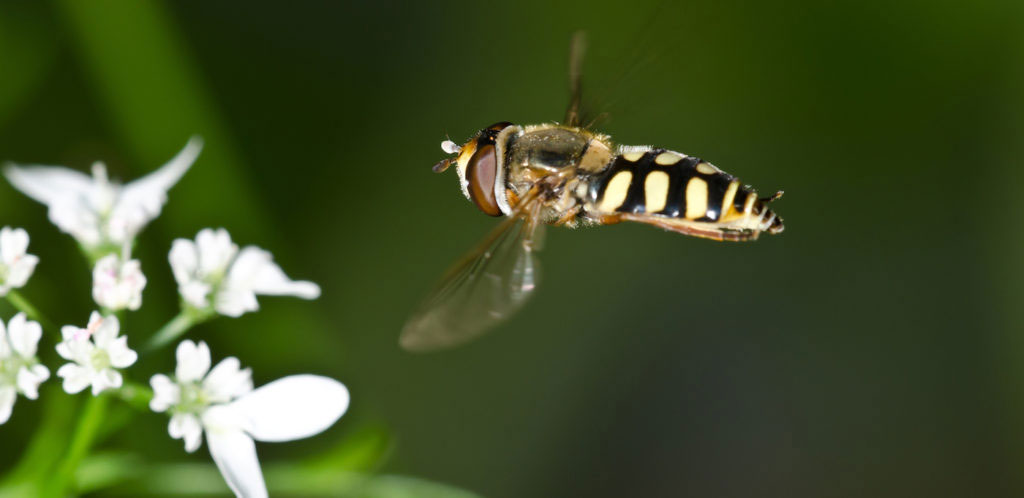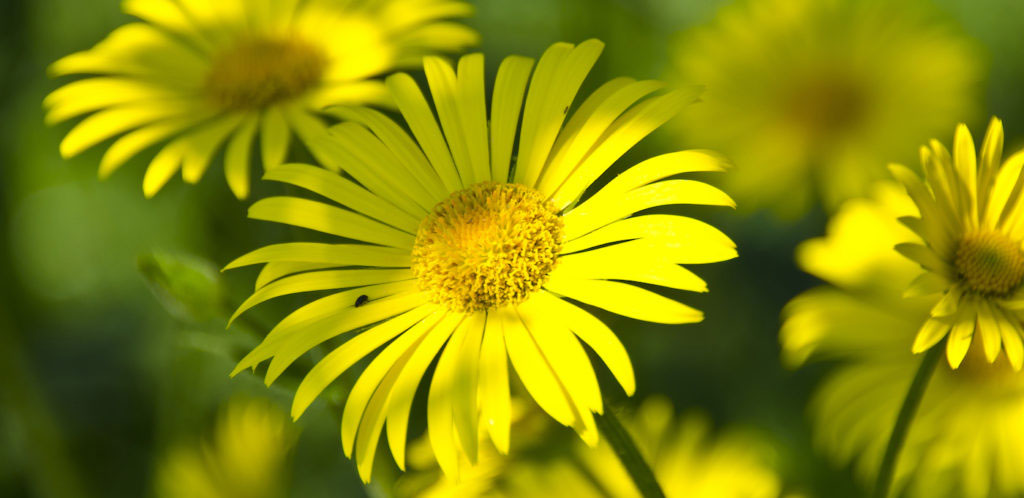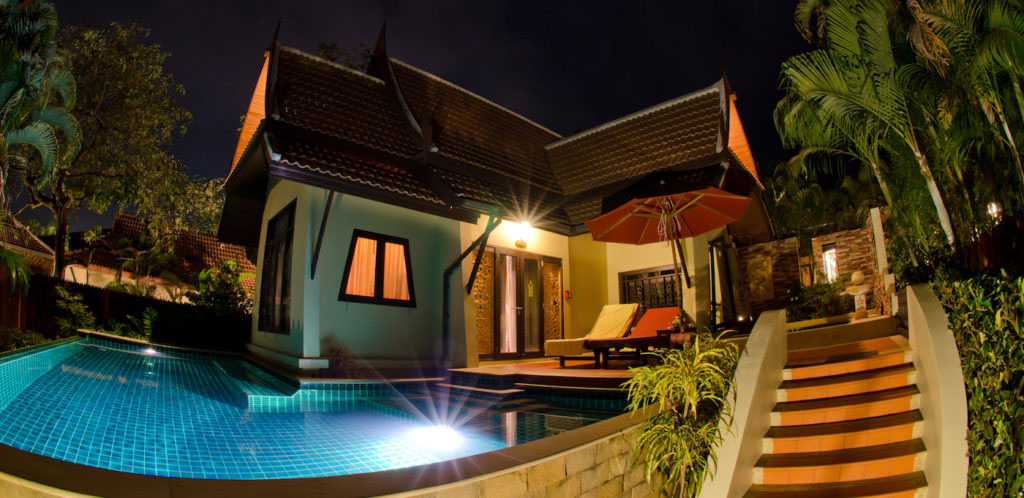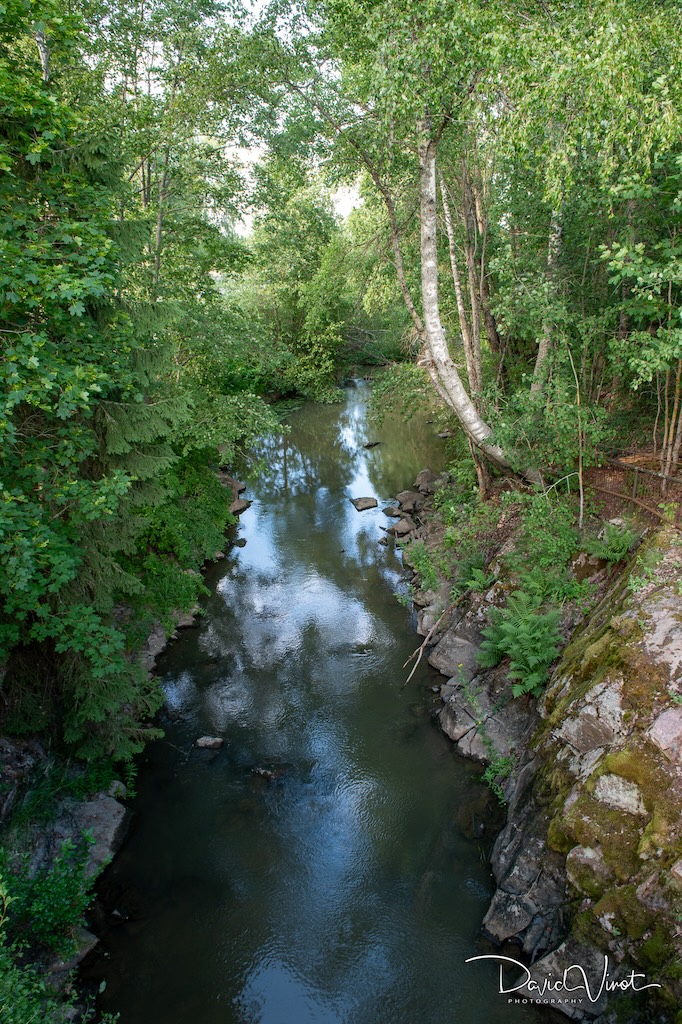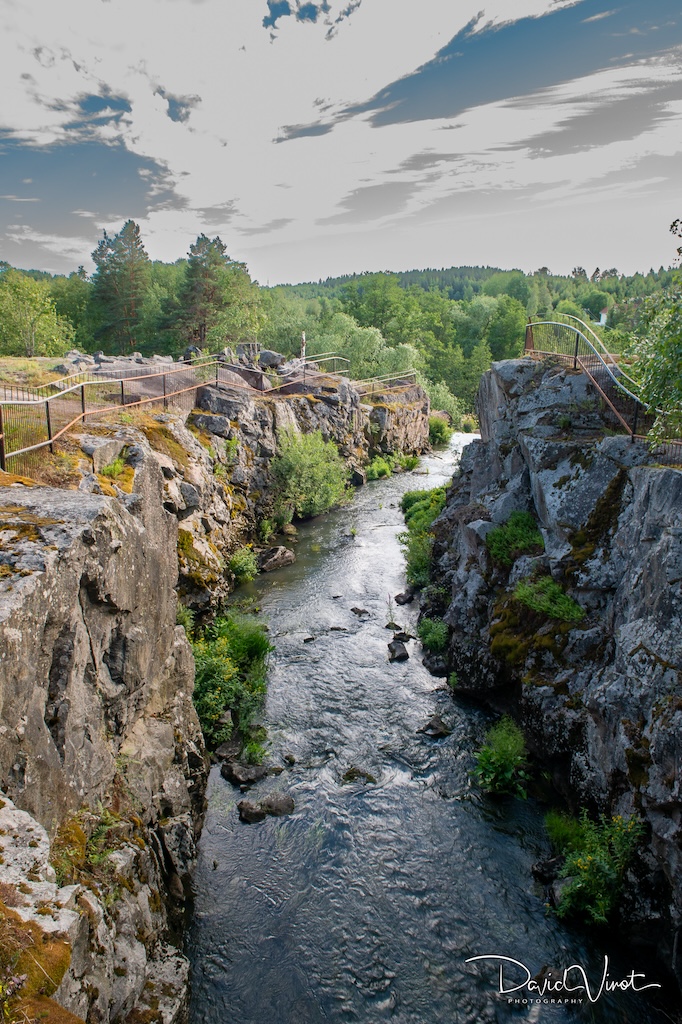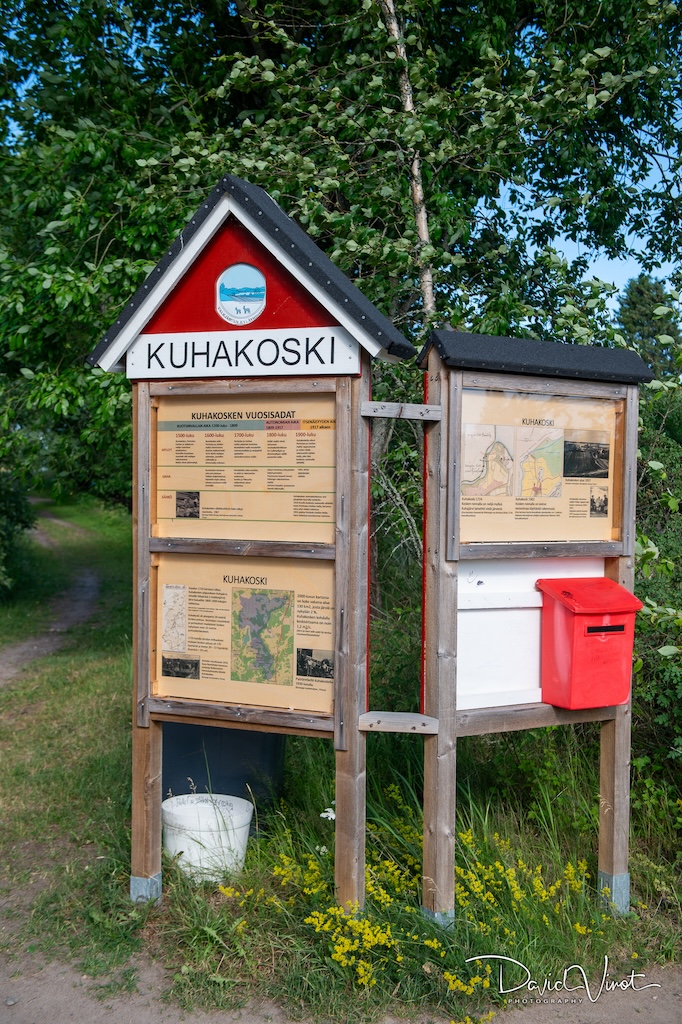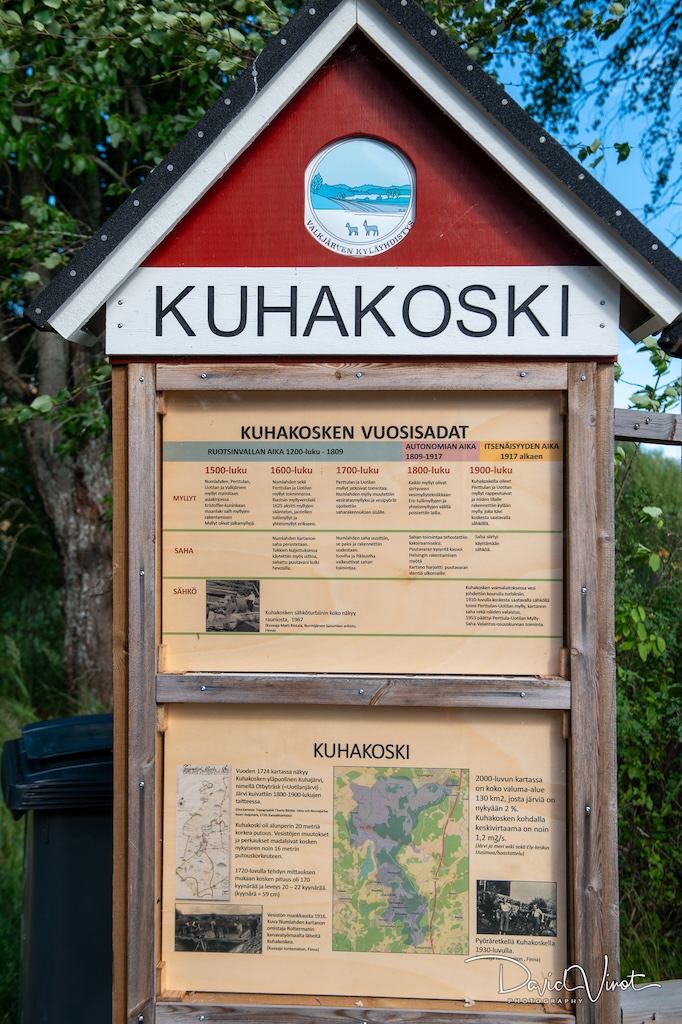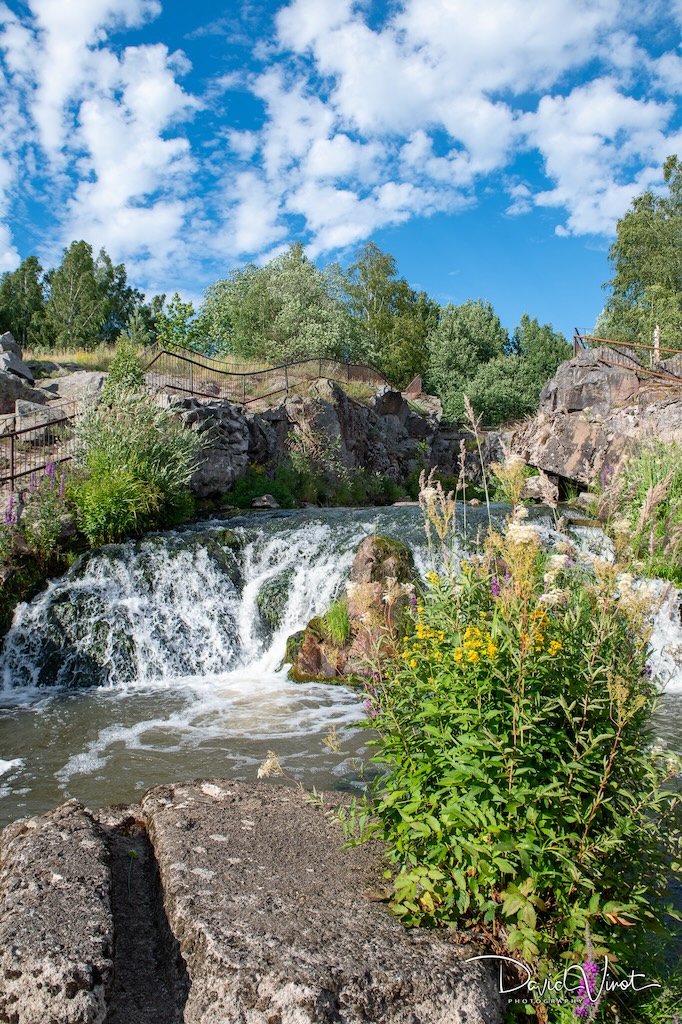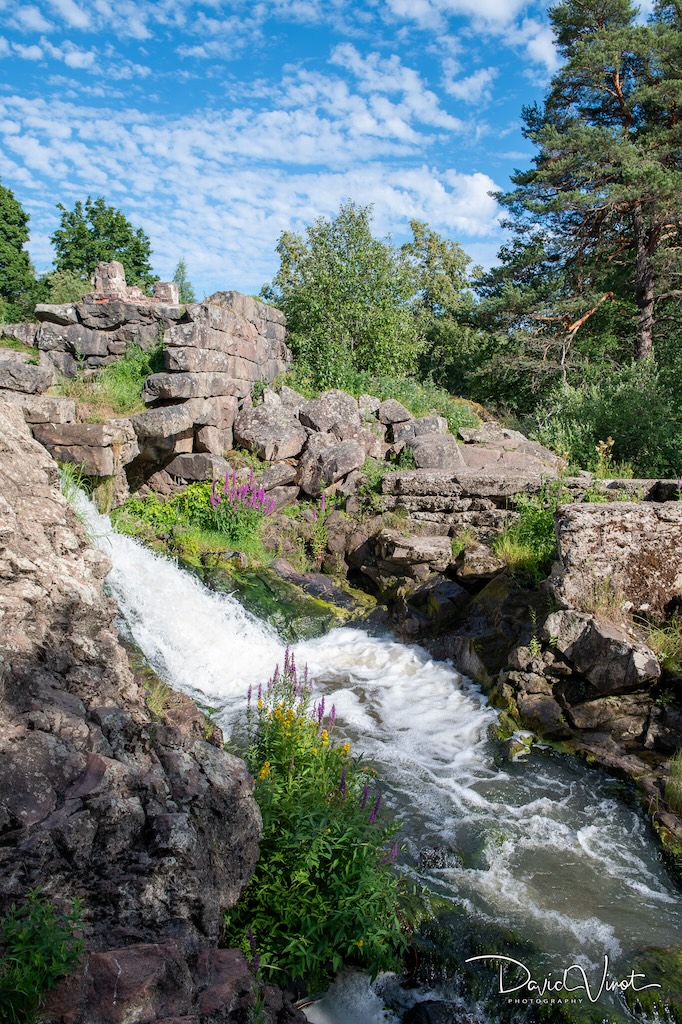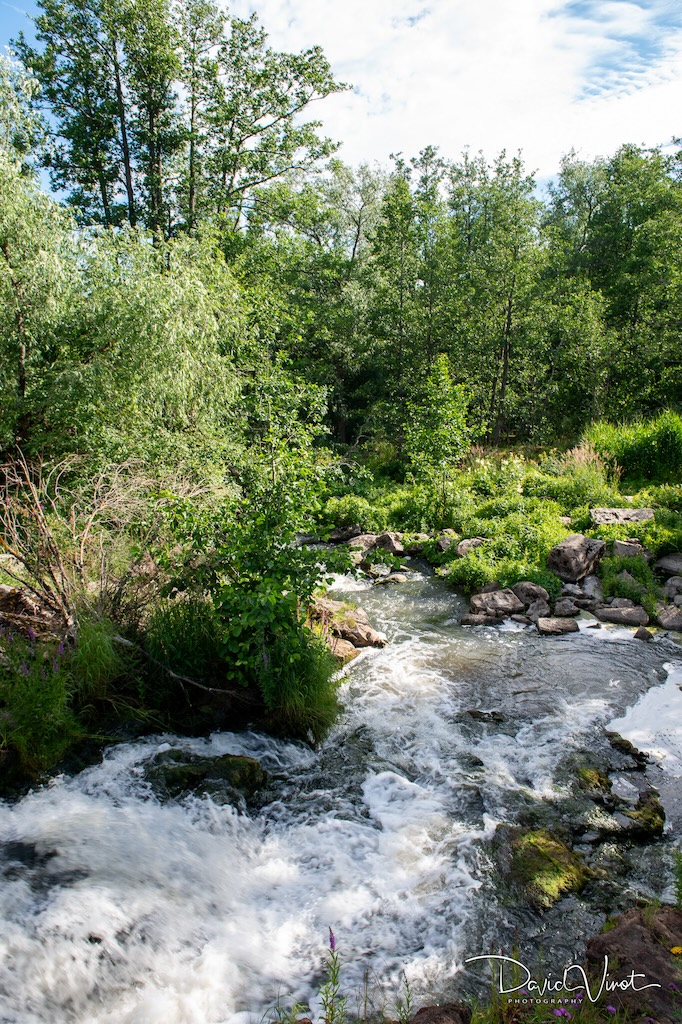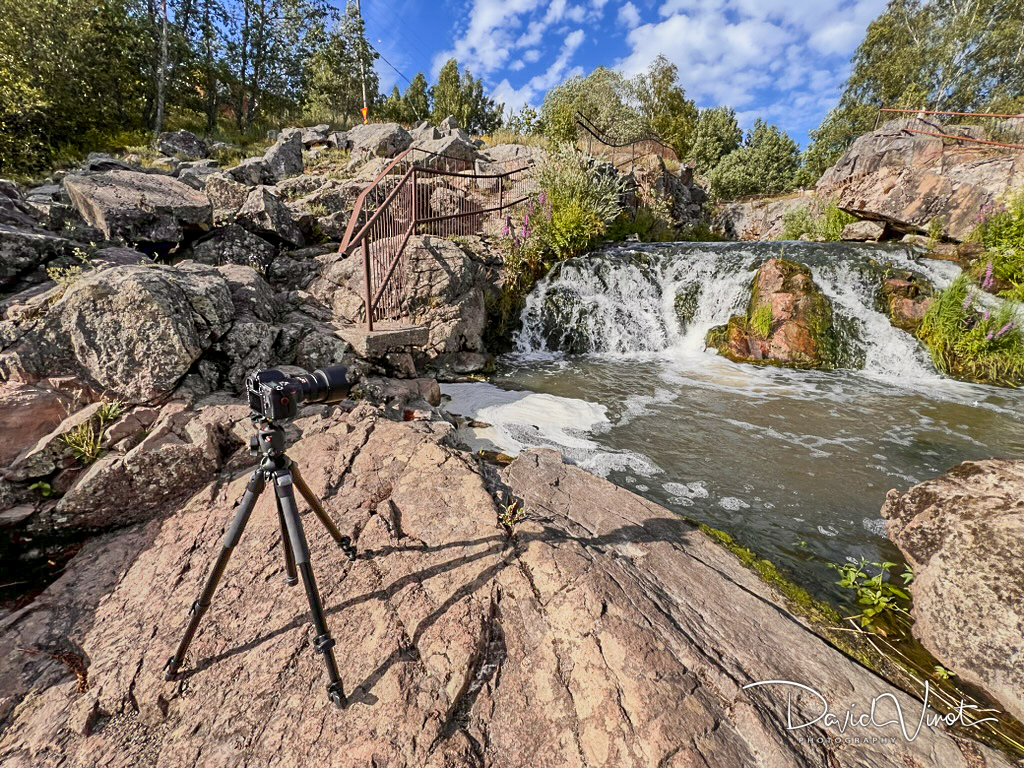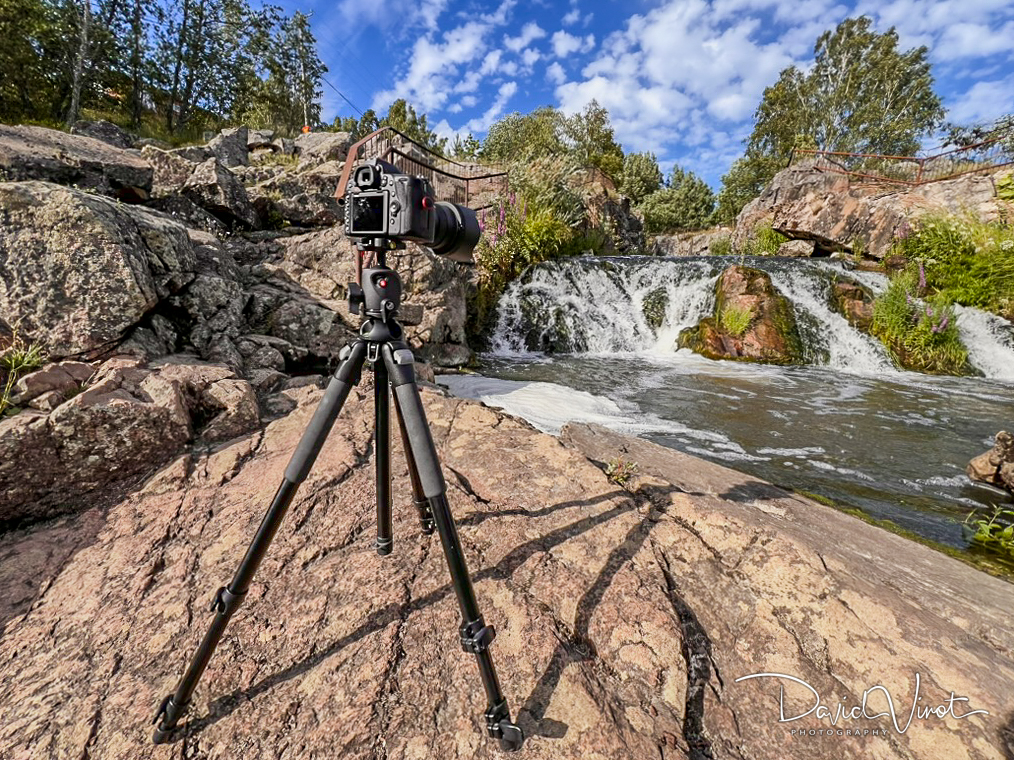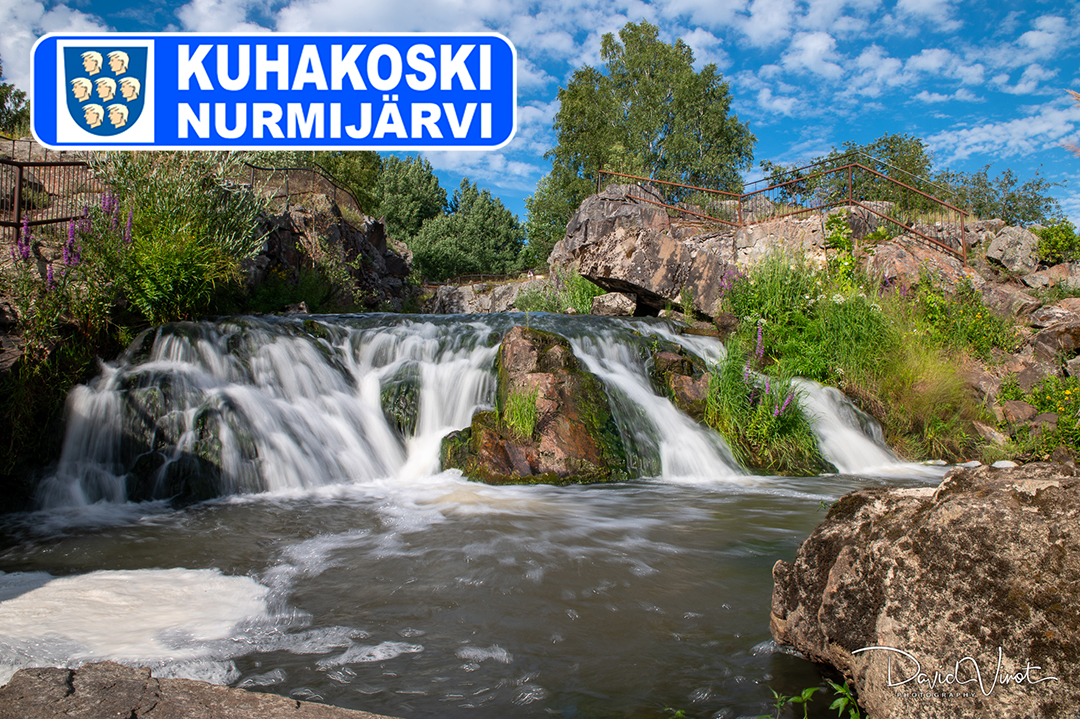
Kuhakoski is one of the rare waterfalls you can find in southern Finland. It is located in the Luhtajoki River, which flows through the village of Perttula in the Nurmijärvi municipality, about 40 km north of Helsinki, between Klaukkala and Nurmijärvi.
There is no entrance fee, and no gate, you are free to visit it whenever you want.
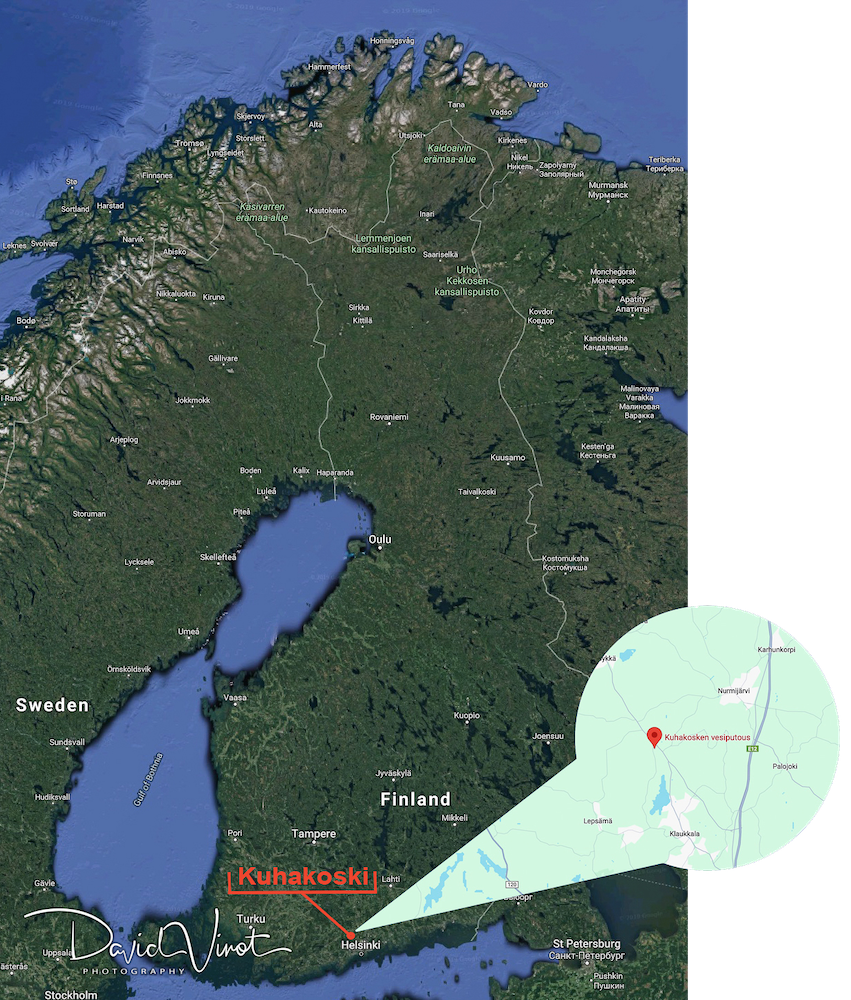
This is a very small waterfall. I had biked past it several times without noticing it until the day I stopped to see what was along this path.
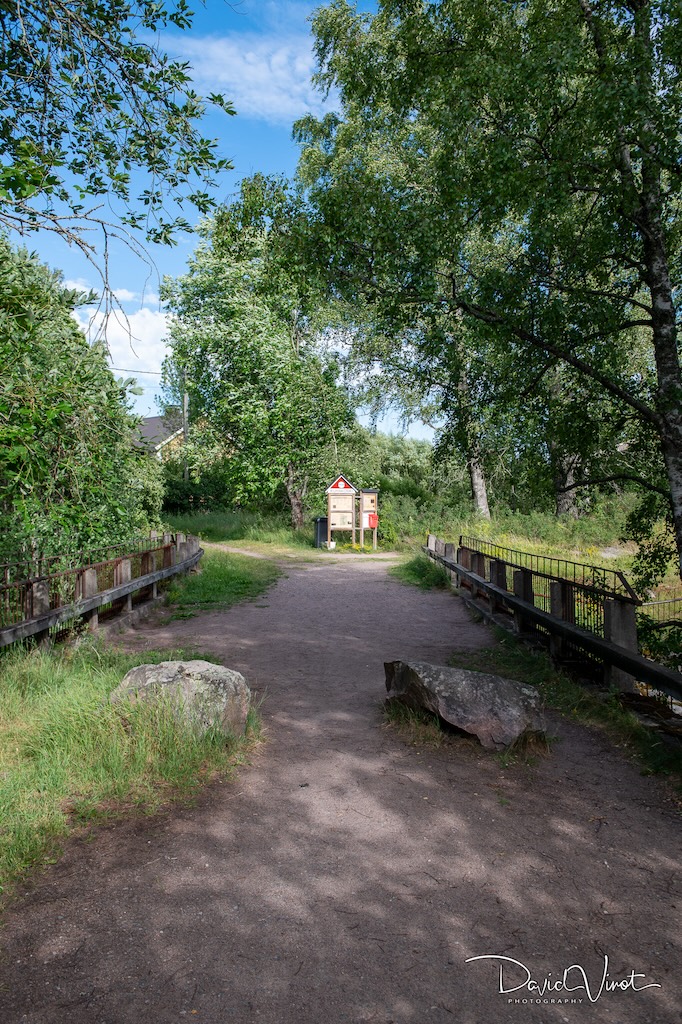
If you translate “Kuhakoski,” it literally means “Pike-Perch Rapids”. I agree with the translation for “rapids”, but I can’t confirm “pike-perch”. I assume there must be some fish in this river, but I have no idea what kind.
Here is the Google Maps location because you may not find it at first sight. You might not even notice the tiny parking area, which can fit only a couple of cars.
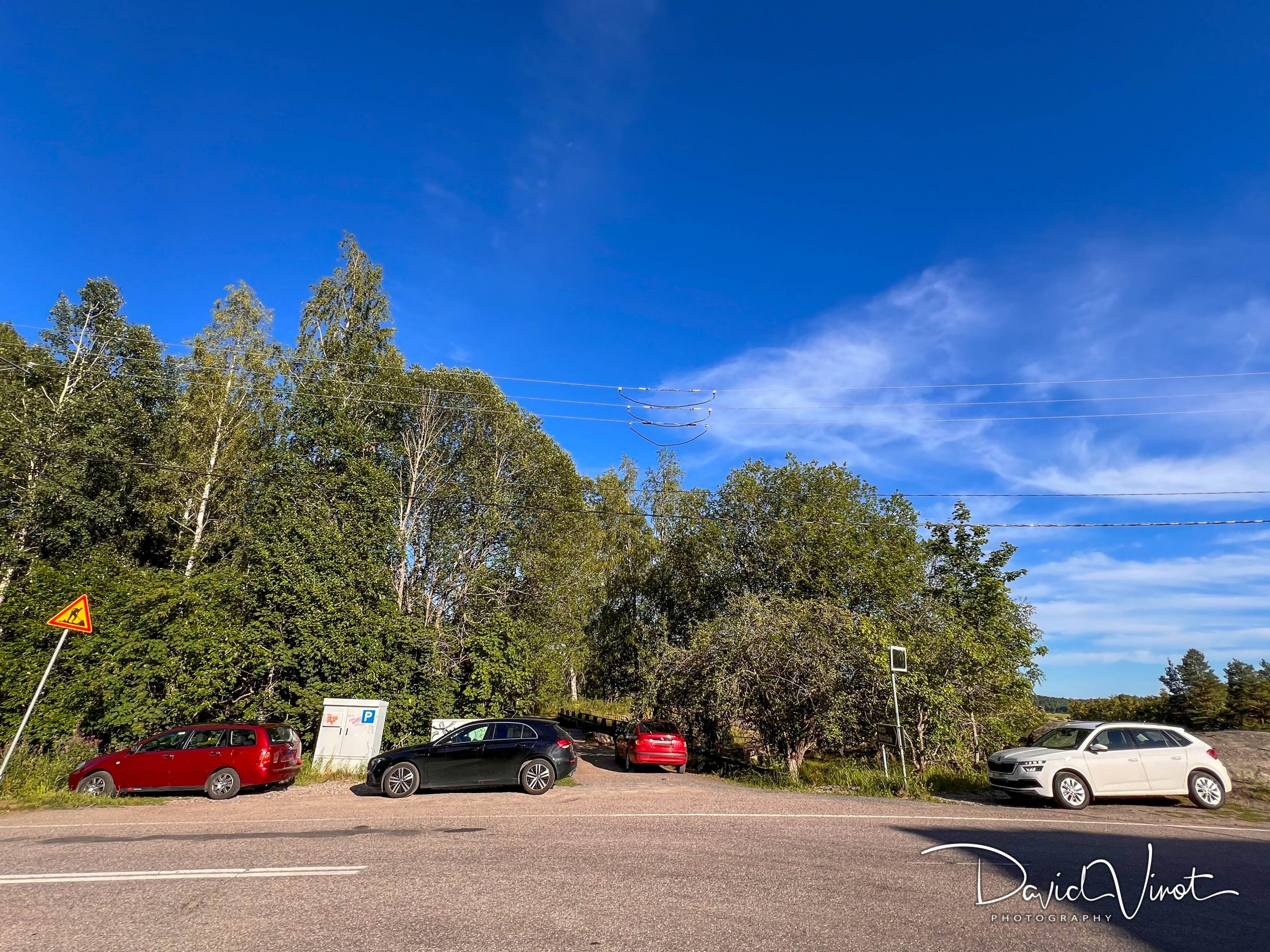 (the “official” parking is on the left side of this picture)
(the “official” parking is on the left side of this picture)
When you enter the site, once on the small bridge, you can see the human-made canyon carved into the rock. On the left side, the river is still very calm, while on the right side, the water gaining speed.
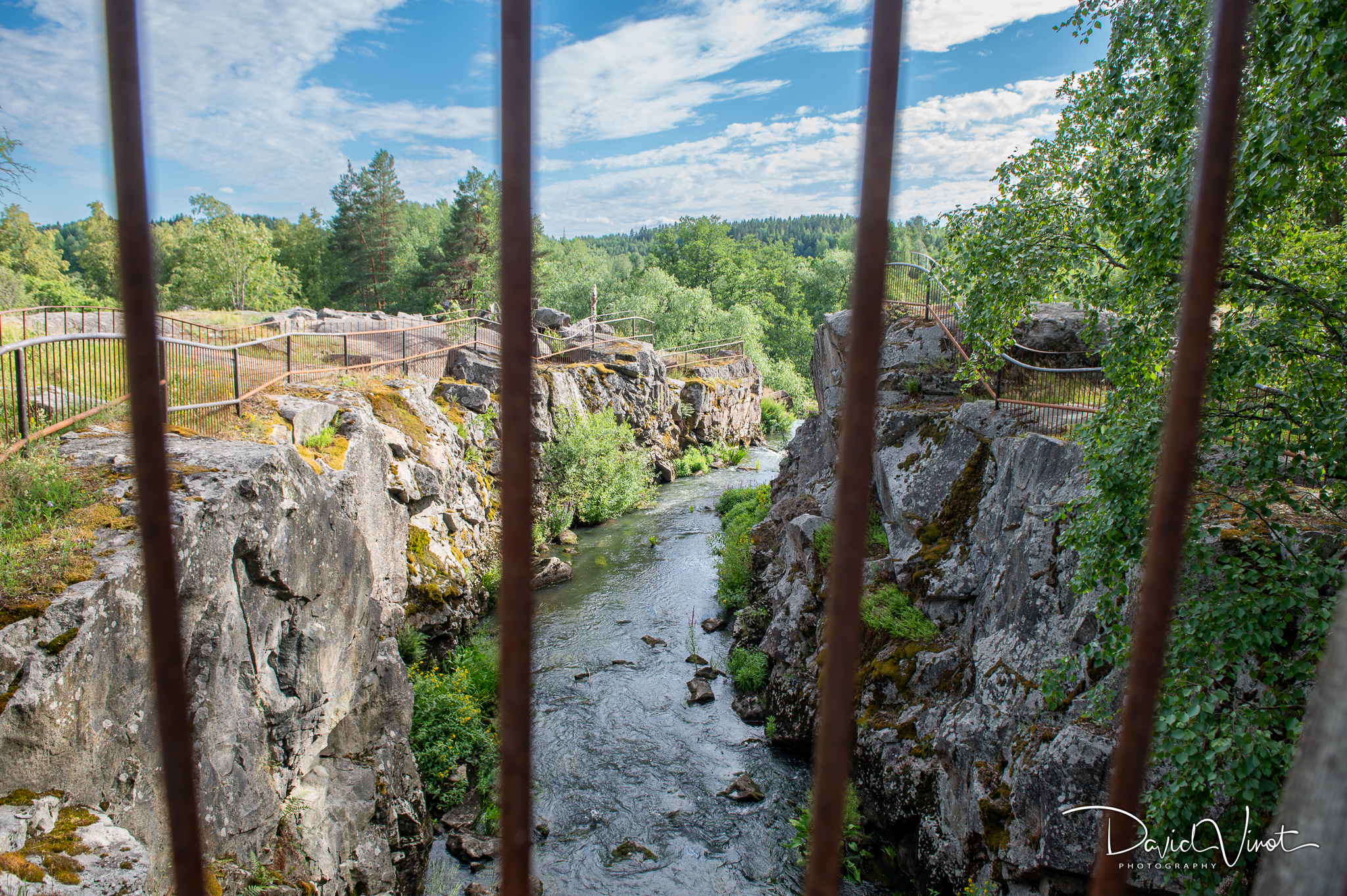
At the end of the path, there is an information board tracing the history of this place and displaying maps of the area.
A bit of history!
Kuhakoski waterfall has played an important role in the history of Nurmijärvi, as it has been one of the most significant falls used for watermills in the area.
Kuhakoski has had four mills since the 1500s, a sawmill from the 1600s to the 1900s, and an electric turbine operated at the falls from 1910 to 1952. Time has left its mark on the falls, and some of the concrete ruins still surround the area. Reinforcement bars or whatever materials were used in the concrete at the time may protrude from the riverbed and elsewhere. Additionally, many of the rocks in the falls have been quarried at some point, making them sharp-edged.
Source: http://koskimelonta.com/
What about now?
As I mentioned, this is a very small waterfall. The waterfall starts from a streambed that has been artificially carved into the rock. The total fall is about 16 meters over two levels and stretches approximately 150 meters with small rapids.
I visited at the beginning of July, with a flow rate was under 5 m³/s, when the water flows gently over the rocks.
If you go earlier in the spring when the snow is melting and the flow rate exceeds 15 m³/s, the falls become more powerful, and any wading in the falls would turn into a near-dangerous experience.
In July, however, it’s very peaceful, surrounded by wild and colourful flowers, with plenty of space to sit and enjoy the sun or have a picnic. Remember to keep the place clean
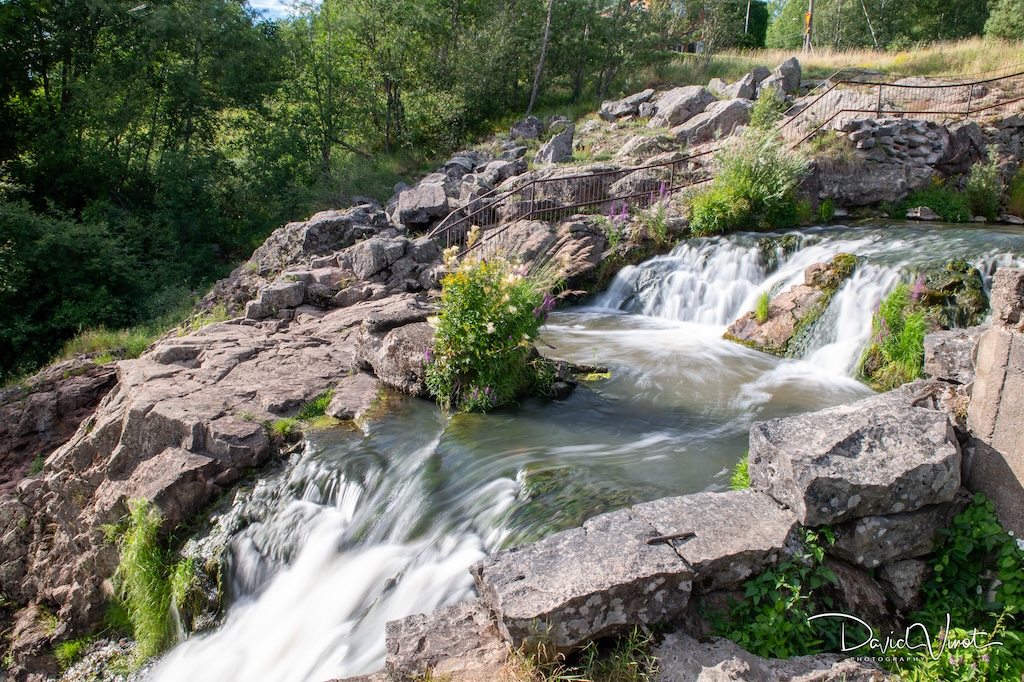
Nature lovers
Despite being close to a road, this place is incredibly quiet, with the only sound coming from the water. There are many wild and colourful flowers around the waterfall and along the riverbanks. Where there are flowers, there are also insects, mostly flying ones.
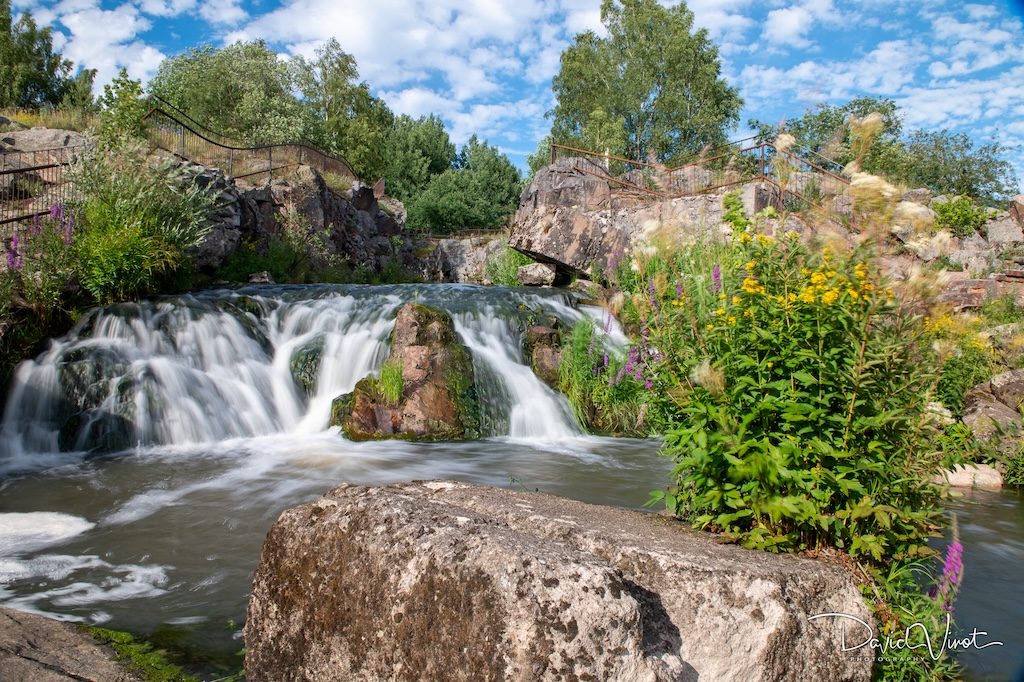
Several small paths lead down to the river, which is safer than jumping on the rocks. However, the grass was quite high, and I wasn’t dressed appropriately to walk through it. Remember, Finland has many ticks, some of which are native to the country.
I hope these pictures and the following video will help you discover this small hidden gem in southern Finland.

Behind the scene:
To capture pictures with the water motion effect, I used long exposures. However, achieving long exposures on a bright day can be challenging. Even at 𝑓22 (the smallest aperture) and with the lowest ISO, the shutter speed is still too high to get any motion blur.
To solve this problem, I used an ND8 filter, set my ISO to 100, and exposed it for 1 second. An ND8 filter was sufficient to avoid a long exposure, as it was a bit windy and I didn’t want the plants, trees, and clouds to be blurred. To avoid any kind of vibration that could deteriorate the picture quality, I mounted my camera on a tripod and set a 3-second shutter delay. Et voilà!
